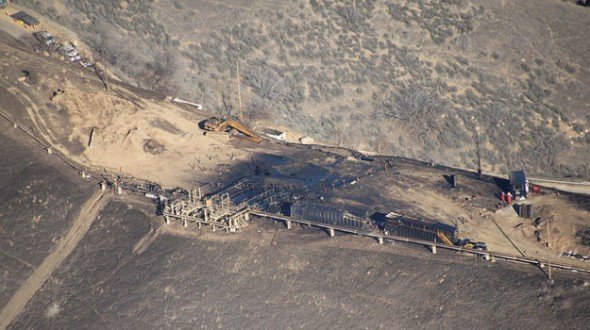According to a research published in Science, the natural gas leak near Los Angeles was the biggest in US history.
The Aliso Canyon blowout vented almost 100,000 tons of methane into the atmosphere before it was plugged.
The impact on the climate is said to be the equivalent of the annual emissions of half a million cars.
According to University of California researchers, the Los Angeles methane leak had a far bigger warming effect than the BP oil spill in the Gulf of Mexico in 2010.
First detected on October 23, the leak came from one of the 115 wells connected to a massive underground natural gas storage facility, the fifth largest in the US.
Seven unsuccessful attempts were made to shut down the billowing plumes of methane and ethane by the owners, Southern California Gas Company (SoCalGas).
Concerns over the impacts of the spewing gas eventually led to more than 11,000 nearby residents being evacuated as California Governor Jerry Brown declared a state of emergency in the area.
The blowout pushed enough of the gas into air every day to fill a balloon the size of a football stadium.
At its peak, the flow doubled the rate of methane emissions from the entire Los Angeles basin.
The leak was permanently sealed on February 18. By then almost 100,000 tonnes of methane had poured into the atmosphere.
The scientific analysis was based on 13 research flights that captured air samples in and around the methane plume as well as from the ground. The initial aircraft readings were so high that the researchers rechecked their monitoring equipment for errors.
The amount of methane entering the atmosphere from the leaking well makes it the largest of its kind recorded in the US. A bigger escape of gas occurred in Texas in 2004 but as most the methane burned off in a fire that followed an explosion, the impact on the climate was muted.
According to researchers, the blowout will have a significant impact on California’s ability to meet its greenhouse gas emissions targets this year.
Methane is short-lived atmospheric chemical but is highly potent as a warming gas, with an effect 25 times higher than CO2 over a 100 year time period.
The analysis found above normal levels of several potentially harmful chemicals that came from the natural gas leak. These included benzene, toluene and xylenes which have been linked to health impacts from long term exposure.
The authors believe there are important lessons to be learned from the leak – particularly the need to monitor oil and gas facilities more carefully.
They say that there has been little co-ordinated oversight of the biggest oil and gas leaks in recent years. They point to Aliso Canyon, the BP spill and the Total Elgin rig blowout in the North Sea, as examples where luck more than intent ensured the impacts on the environment were monitored.
In the case of Aliso Canyon, the surveying aircraft was working on another project searching for pipeline problems, when the scientists were asked to overfly the leaking well.
